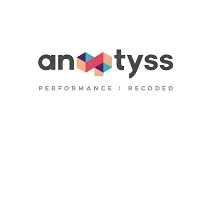In today's fiercely competitive financial landscape, banking leaders face a triad of pressures, including compressing margins, escalating credit risk, and rapidly evolving regulatory expectations.
For banks and financial institutions, navigating this environment demands more than incremental improvement. It requires a fundamental shift in how credit risk is assessed and managed. Artificial Intelligence (AI) and Machine Learning (ML) are no longer futuristic concepts; they are the strategic engine driving the most resilient and profitable lending institutions. This is not about replacing human expertise, but augmenting it with unparalleled speed, depth, and predictive accuracy across the entire lending lifecycle.
A Strategic Overhaul of the Lending Lifecycle
Integrating AI is not a piecemeal fix but a strategic transformation of core lending operations. From the first customer touchpoint to the final repayment, AI introduces intelligence that enhances efficiency and sharpens risk acuity.
1. Origination - The New Digital Front Door
The battle for the best customers is won or lost at the point of origination. Clunky, paper-intensive application processes are a primary driver of customer abandonment. AI completely reimagines this experience.
-
Seamless Onboarding
AI-powered platforms automate data extraction from various documents, pre-fill applications, and use biometric verification, reducing manual entry and friction.
-
Intelligent Screening
Sophisticated algorithms perform instant preliminary eligibility checks, allowing lenders to quickly segment applicants and fast-track high-quality leads. This frees up relationship managers to focus on building value-added relationships with more complex clients rather than on administrative tasks.
2. Underwriting - Beyond the Traditional Scorecard
For decades, underwriting has relied on a limited set of traditional data points. This approach is increasingly inadequate for a diverse economy and often excludes creditworthy "thin-file" or "no-file" applicants. AI-driven underwriting represents a paradigm shift.
-
Deeper Risk Insights
ML models can analyze thousands of data variables simultaneously. They integrate alternative data sources—such as rental history, utility payments, and real-time cash flow analysis—to build a far more comprehensive and accurate picture of an applicant's capacity and willingness to repay.
-
Automated Decision Engines
For a significant portion of loan applications, AI can deliver consistent, unbiased, and instantaneous credit decisions. This dramatically accelerates loan turnaround times, a key competitive differentiator.
For instance, a US-based commercial lender utilized an AI/ML-based data analytics solution to achieve 93% accurate prediction of delinquent and written-off customers, showcasing the power of predictive modeling in underwriting. By implementing a machine-learning based credit risk scoring model, another institution achieved $400K in annual savings, demonstrating the direct financial impact of improved risk assessment.
3. Monitoring & Servicing - Proactive, Not Reactive
The risk of a loan does not end once it is disbursed. AI transforms portfolio monitoring from a reactive, rearview-mirror exercise into a proactive, forward-looking discipline.
-
Behavioral Scoring
AI models continuously analyze customer transaction patterns, identifying subtle shifts in behavior that may signal impending financial distress long before a payment is missed.
-
Optimized Collections
Instead of a one-size-fits-all approach, AI can predict which customers are likely to "self-cure" and which require early, personalized intervention. This focuses resources where they are most needed, reducing delinquency rates and preserving customer relationships.
By implementing a machine-learning based credit risk scoring model, another institution achieved $400K in annual savings, demonstrating the direct financial impact of improved risk assessment.
The Engine Room: Data, Models, and Defensible Decisions
For banks and financial institutions, implementing AI is as much about governance as it is about technology. The effectiveness of any AI model is contingent on the quality of its data and the transparency of its decisions.
-
Data Flows & Governance
AI requires a robust data ecosystem. This means creating seamless data pipelines that can ingest, cleanse, and integrate vast, varied datasets from both internal (core banking, CRM) and external sources. A stringent data governance framework is paramount to ensure data quality, security, and compliance with privacy regulations like GDPR and CCPA. For instance, an investment bank scaled its operations by implementing analytics-based data validation and a smart dashboard, highlighting the foundational need for solid data infrastructure.
-
Model Training and Explainable AI (XAI)
The "black box" criticism of AI is a significant hurdle for regulated institutions. A CRO or Compliance Officer must be able to defend a model's decision to auditors and regulators. This is where Explainable AI (XAI) becomes non-negotiable. XAI techniques provide clear, human-understandable justifications for each automated decision. For instance, "The loan was flagged due to a high debt-to-income ratio combined with recent irregular cash flow patterns".
In addition, rigorous, independent model validation and continuous monitoring for performance drift are essential components of model risk management.
High-Impact AI Use Cases in Commercial Lending
The theoretical benefits of AI are proven by tangible results at leading financial institutions.
1. Proactive Fraud Detection
Traditional fraud systems, which rely on static rules, are easily circumvented by sophisticated fraudsters. AI, however, excels at identifying complex, non-obvious patterns. JPMorgan Chase, for instance, has leveraged AI to analyze vast datasets to identify and prevent fraud. By analyzing network connections and behavioral anomalies, their models can detect organized fraud rings at the application stage, a task impossible for human analysts alone. The firm has stated its AI initiatives are projected to generate approximately $1.5 billion in incremental business value.
2. Intelligent Early Warning Systems (EWS)
AI-powered EWS are transforming risk management from a historical review into a predictive science. These systems act as a financial radar, scanning a multitude of inputs—from customer transactions and macroeconomic data to hyperlocal news sentiment—to forecast potential defaults months in advance. A European commercial bank, by integrating news intelligence into its EWS, was able to identify 60% of its credit loss events an average of 2.5 months earlier than before.
This lead time is crucial, allowing for proactive engagement with at-risk clients to restructure loans or reduce exposure.
3. Dynamic Portfolio Risk Signals
Understanding portfolio-wide risk in real time is a critical challenge. AI enables a dynamic, forward-looking view. By using generative AI, risk managers can now query their portfolios using natural language (e.g., "Show me our total exposure to commercial real estate in regions affected by recent supply chain disruptions"). The models can then instantly analyze the portfolio, identify hidden concentration risks, and run on-the-fly stress tests against emerging macroeconomic scenarios, providing the CRO with actionable intelligence to rebalance the portfolio and mitigate future losses.
Conclusion
Adopting AI in lending is not merely a technology upgrade; it is a fundamental business transformation. The rewards—enhanced efficiency, superior risk management, improved customer satisfaction, and ultimately, greater profitability—are immense. For the banks and lending institutions, means embracing new tools to gain a predictive edge on risk and ensuring that these powerful new capabilities are deployed transparently and ethically.
The financial institutions that thrive in the coming decade will be those that harness the power of AI to make smarter, faster, and more insightful credit decisions. The time to build that intelligent edge is now.














